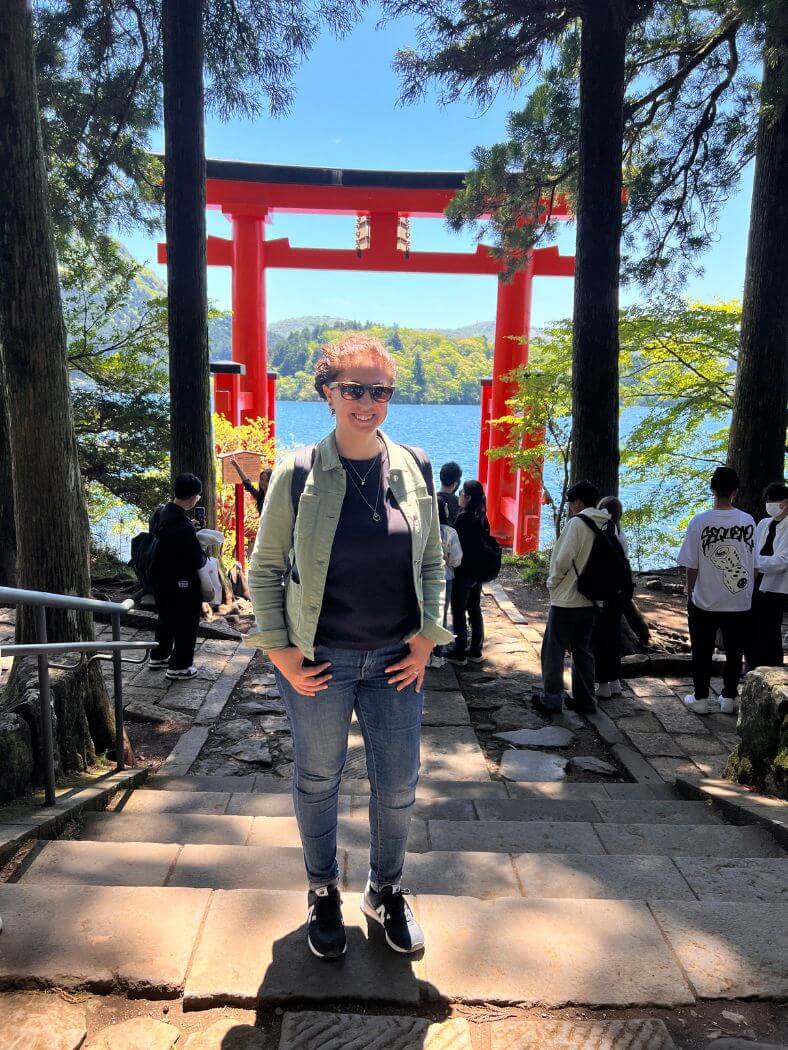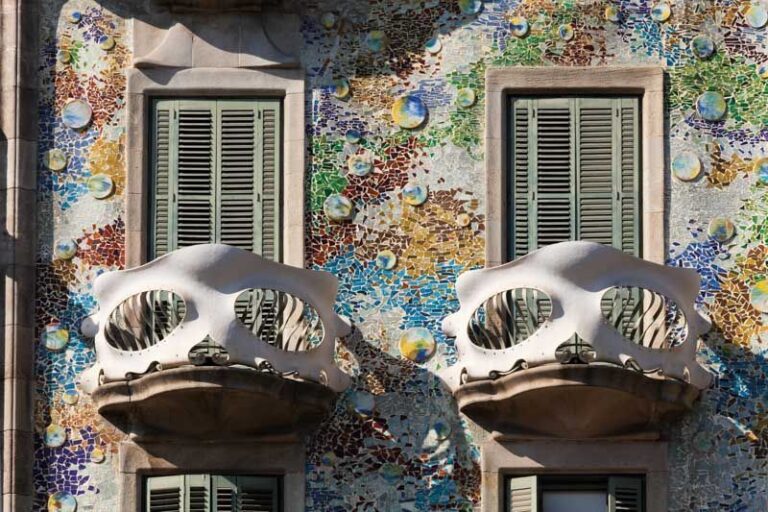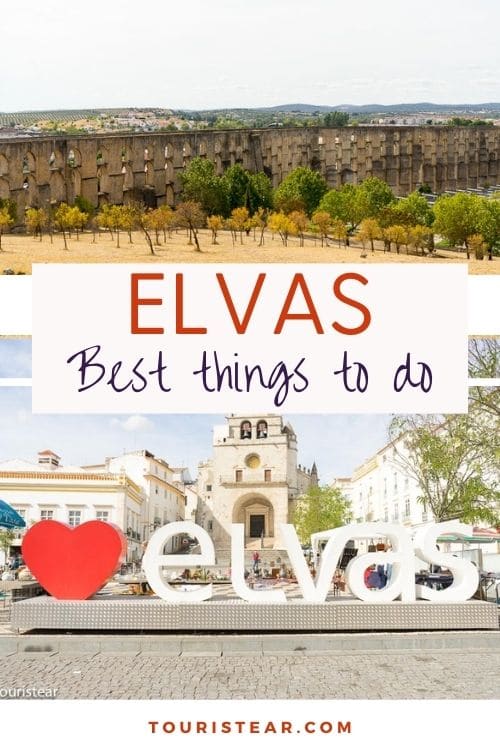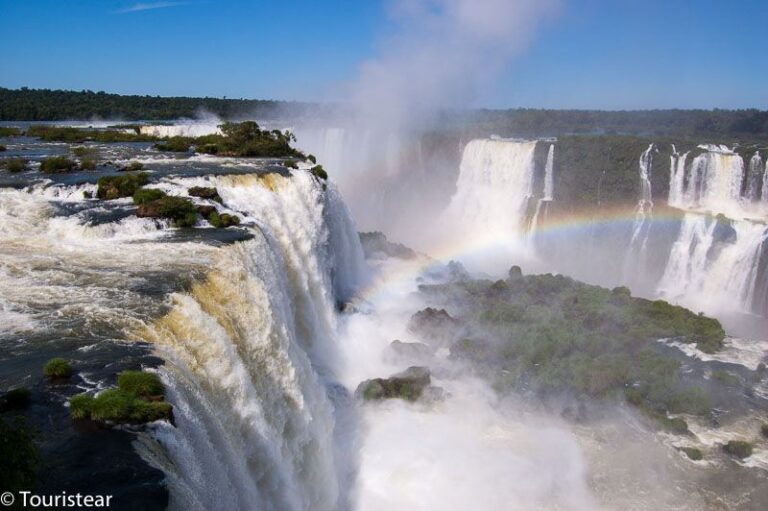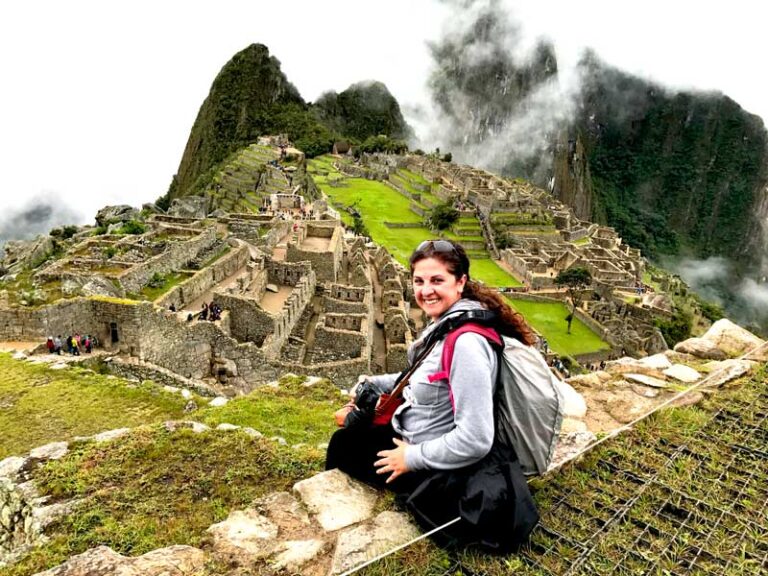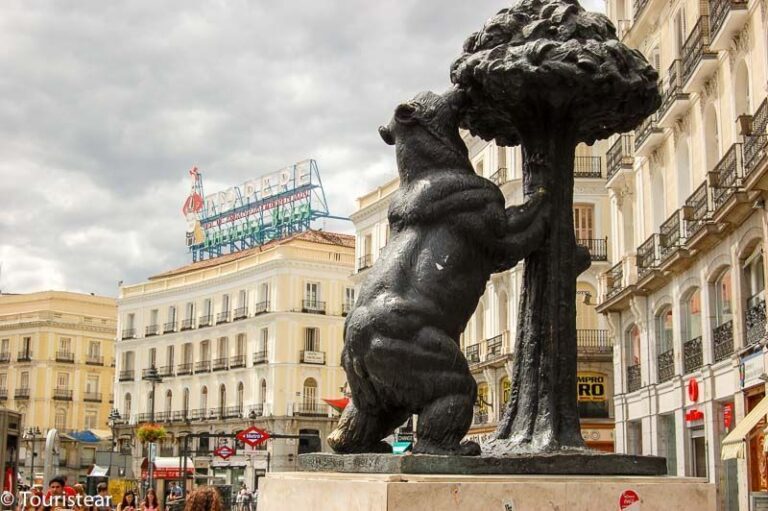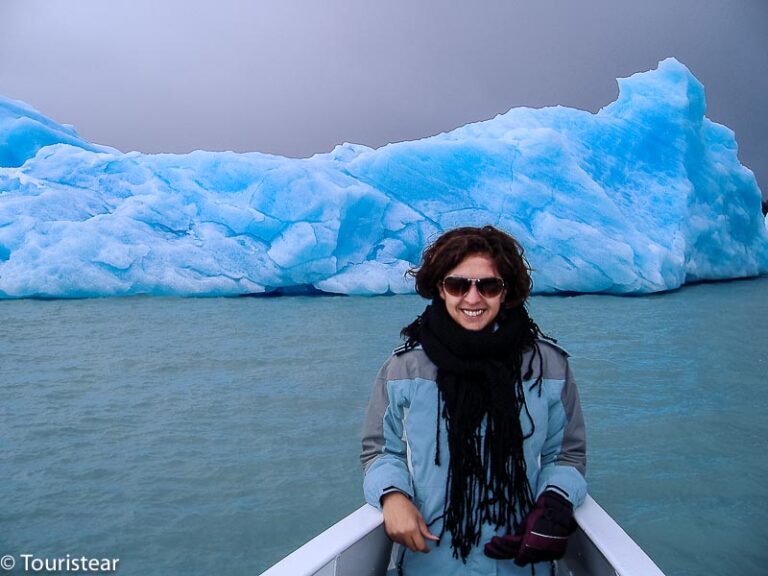15 Best Things to Do in Salamanca in 1-Day
Located in the northwestern part of Spain, Salamanca is a city of exceptional beauty. It was declared a World Heritage Site by UNESCO in 1988, and in 2002 it was named the European Capital of Culture.
In this post, we have rounded up the 15 best activities and places of interest in this dazzling Spanish gem that you have to visit.
Let’s start!
- Would you visit Salamanca from above? Check out the hot air balloon ride.
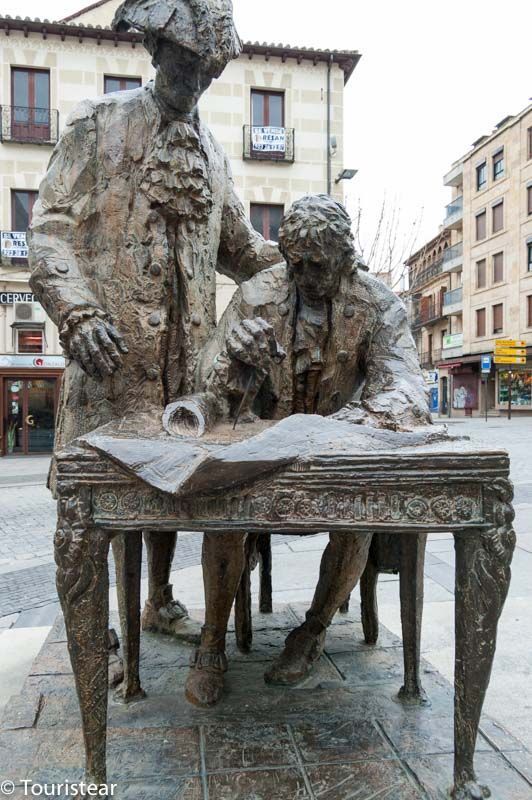
15 Things to Do in Salamanca
The Plaza Mayor of Salamanca
One of the largest squares in Spain, the Plaza Mayor, is in the heart of the bustling city of Salamanca.
The square is bordered by three-story buildings with 88 arcades in which there are carved medallions with important figures from the city’s history. It was built in two phases and finally finished in 1755.
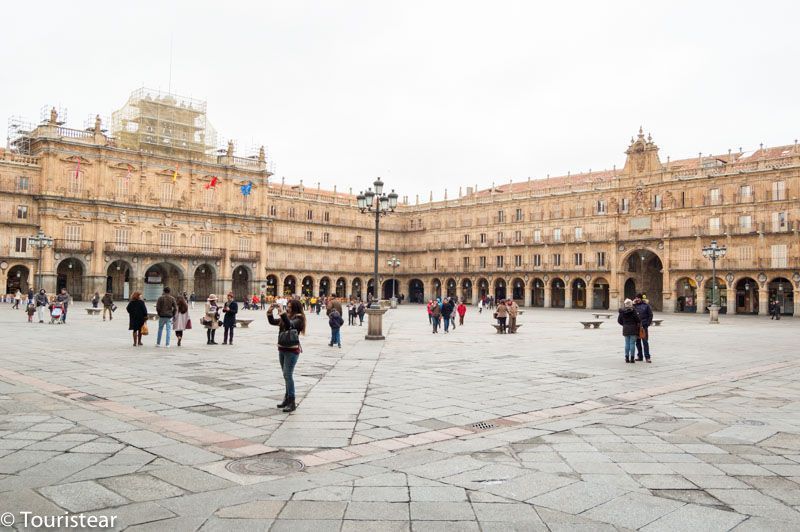
As a curiosity, although it may seem so, the Plaza Mayor is not a perfect square since no facade measures the same.
It is considered one of the most beautiful in the country, and its baroque architecture and intricate decoration are a sight to behold.
Small shops and restaurants are located under the arcades. What makes the square a particularly lively scene at night. This square is one of the best places to visit in Salamanca to experience the city’s nightlife.
Among the monumental buildings in this square are the Royal Pavilion by Alberto de Churriguera and the Churriguera-style Town Hall by Andrés García de Quiñones.
Historically, the Plaza Mayor has served as the setting for ceremonial occasions as well as bullfights until the 19th century.
Together with the University of Salamanca, the Plaza Mayor is considered the emblem of the city and has been declared a National Monument.
You can do this private tour of Salamanca with a professional guide, only with the people you travel with.
Monterrey Palace
The Palacio de Monterrey is one of the best examples of civil architecture of the Spanish Renaissance and the greatest exponent of Plateresque.
It has served as an example for other architectural styles, such as the Neoplateresque or the “Monterrey Style,” and as an inspiration for other buildings, such as the Cavalry Academy of Valladolid, the current Archaeological Museum of Seville, and the Palencia Provincial Council Palace.
You can get there from the Plaza Mayor, along with Calle del Prior, you reach the Palacio de Monterrey.
Visitors can see the interior (which contains notable works of art) by taking a guided tour. Tours are available daily. Tickets can be purchased at the Tourist Office or purchased online in advance. Mondays are free.
The New Cathedral of Salamanca
Presiding over the city from an imposing hilltop location, the New Cathedral is a monumental building that dwarfs the Old Cathedral in size and Gothic grandeur.
Although this cathedral dates from 1513, it is called “new” because the original cathedral of the town was built in the 12th century. The Old Cathedral and the New Cathedral are next to each other.
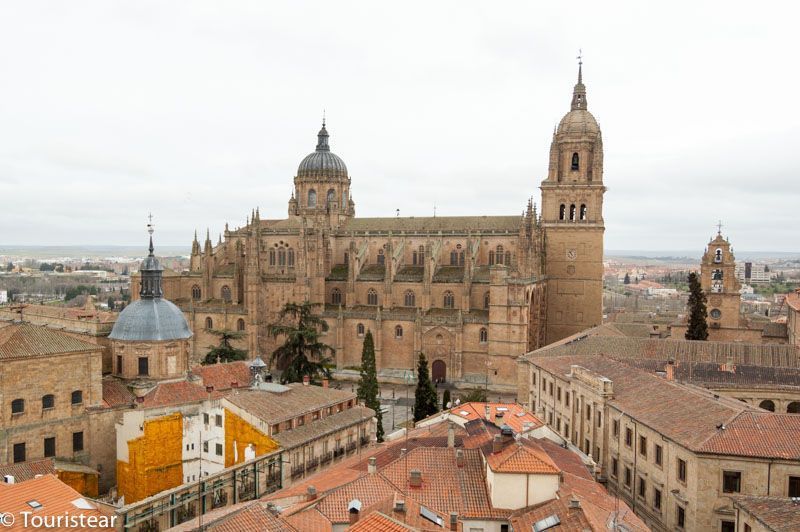
The New Cathedral construction was started at the beginning of the 16th century by Juan Gil de Hontañón and finished in the 18th century by Alberto de Churriguera.
Because it took two centuries to complete, the building displays a combination of Gothic, Plateresque, and Baroque architectural elements.
The plateresque portals are richly decorated, especially the western portal and the north portal, in which relief of Christ’s entry into Jerusalem is represented. The 110-meter-high tower has a beautiful dome.
On the façade of the new cathedral, you can see the astronaut, this emerged at the end of 1991 when the Puerta de Ramos was reformed, and the stonemasons decided to leave touches of modernity and new times on the walls.
The impressive dimensions of 104 meters long and 48 meters wide give the interior an overwhelming effect of spaciousness. In addition, the vaulted sanctuary rises to a height of 38 meters.
Several chapels exhibit masterpieces, such as the tomb of San Ánchez de Palenzuela in the Capilla Dorada and the figure of the Virgen de la Cueva, patron saint of Salamanca, in the Capilla del Mariscal.
In the Chapel of Cristo de las Batallas there is an 11th-century crucifix given by El Cid to his comrade-in-arms Jerónimo, later bishop of Salamanca.
The New Cathedral is open to the public for guided tours (for a fee). Visitors can choose to use an audio guide.
Address: Plaza Juan XXIII, Salamanca
The Old Cathedral
The Old Cathedral is the oldest Christian monument in Salamanca. It was built between 1100 and 1200. This magnificent Romanesque cathedral is one of the most splendid buildings of this architectural period in Spain.
Although the Old Cathedral is not as majestic as the New Cathedral, it has its own special beauty and captivating atmosphere of the others days. The cathedral also contains beautiful tombs of bishops and the aristocratic patron of the cathedral (owner of the Casa de las Conchas).
The 14th-century Chapel of Saint Barbara was where university students appeared before their examiners for their final exams.
Other interesting architectural features include the cathedral’s Torre del Gallo, a distinctive tower named after the figure of a rooster that crowns it, and the 12th-century cloister with its serene surroundings.
The cloister was damaged in the 1755 earthquake and rebuilt after 1785, so very little Romanesque design survived.
The Old Cathedral is open to the public for guided tours. It is entered from the south aisle of the New Cathedral. The best view of the Old Cathedral is from the Patio Chico.
Address: Plaza Juan XXIII, Salamanca
The Towers of the Clerecia
The tripartite façade of this glorious church and ecclesiastical college towers over the Casa de las Conchas, which is located on the other side of Calle de la Compañía.
It is a baroque building from the early 1700s, built under the orders of the wife of King Philip III, Margaret of Austria.
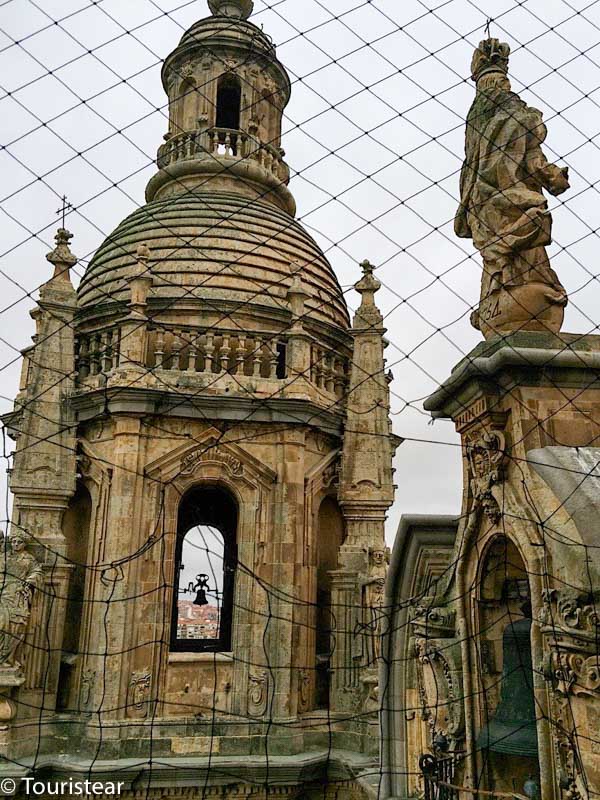
You will only be able to see inside if you join a guided tour of the Pontifical University, which has occupied the building since the 1940s.
One of the best things about climbing the Scala Coeli is enjoying the beautiful views of the city from the transept between the two towers of the building.
Address: 5 Calle Compañía, Salamanca
The House of Shells (Casa de las Conchas)
Casa de las Conchas was built in the 15th century; this Renaissance palace was the residence of Talavera Maldonado, Knight of the Order of Santiago.
The most remarkable thing about the palace is the façade decorated with carvings of scallop shells, a symbol of the medieval pilgrims who made the Camino de Santiago to Santiago de Compostela.
More than three hundred sculpted sandstone shells adorn the exterior walls of the building.
Depending on the time of day, the sunlight creates an exciting effect on the facade’s pattern.
The building also has Mudejar architectural elements, typical of Elizabethan art. Note the gothic coat of arms on the front door and the intricate wrought-iron bars on the windows.
Today, the palace houses the Public Library of Salamanca and an information office. In addition, tourists can visit the inner courtyard of the building, which is a beautiful two-story space.
Address: Calle Compañía, 2, Salamanca
The University of Salamanca
The University of Salamanca is located in the city’s historic center and was founded between 1425 and 1433. The building is considered one of the most beautiful universities in the world, especially for its facade.
The carvings are an excellent example of the Plateresque style and were added in 1592 by the Catholic Monarchs. Many tourists try to find one of the most famous carvings, the ‘frog in a skull.’
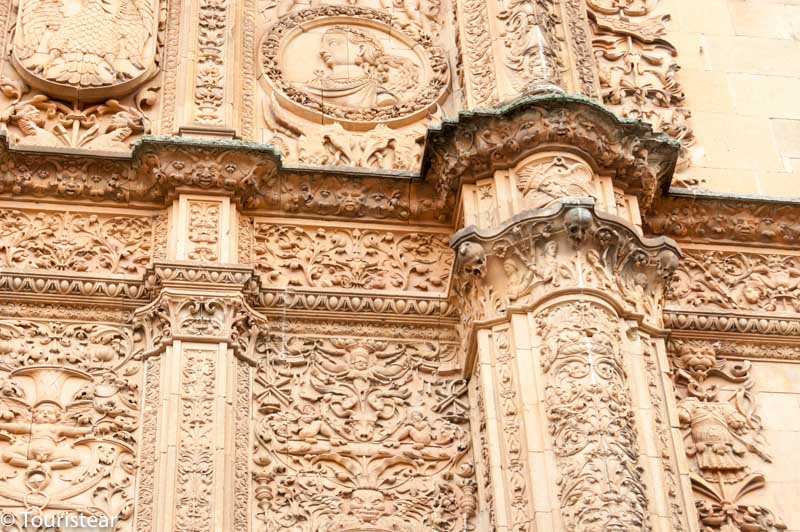
Other secrets that this facade hides are the child carrying a Hermes the scales of justice hanging from a medallion.
The truth is that the University of Salamanca is one of the oldest universities in the world and one of the most impressive and dazzling buildings in the country.
Orchard of Calixto and Melibea
This beautiful garden is located on Calle Arcediano. It is a landscaped space on the wall to see the Cathedrals and the Roman bridge.
It was opened in 1981 and had a very romantic air. It is said that it is the possible scene of the love encounters of Calixto and Melibea, protagonists of La Celestina.
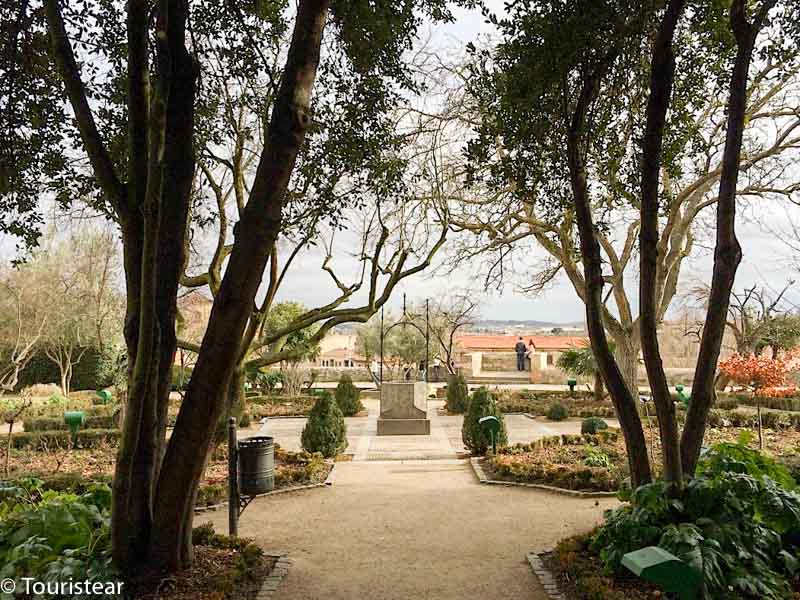
San Esteban Convent
The San Esteban Convent is located a little away from the New Bridge, in a quiet environment. This Dominican monastery has a splendid church built between 1524 and 1610 with a façade that exemplifies the rich Plateresque decoration.
The church has a golden main altar from 1693 by José de Churriguera, one of the sculptor’s great works, and three side altars created by his students.
To the left of the high altar is the tomb of the Duke of Alba, governor of the area of the Netherlands that was once under Spanish rule.
Not to be missed is the fresco The Triumph of the Church (Over the Choir), created by Antonio Palomino in 1705, and the convent’s two-story cloister with exquisite medallions, beautiful ornate figures, and a staircase by Gil de Hontañón.
The convent is open to visitors daily (with an entrance fee).
Address: Council of Trent Square, Salamanca
Roman bridge
The Roman Bridge is an important landmark closely linked to the city’s identity since it has been part of the coat of arms of Salamanca since the 13th century.
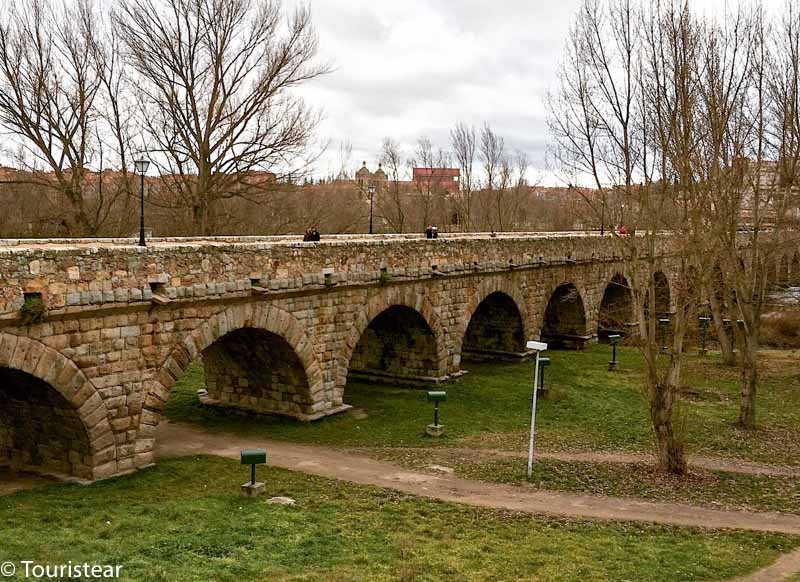
The bridge itself dates to the 1st century CE, with more than half of its original stone arches still intact.
This bridge is part of the Vía de la Plata and is about 176 meters long and 3.7 wide. Only 15 arches of the Roman construction remain of the stone bridge; the rest (11) have been rebuilt in the 17th century, during the reign of Philip IV.
Palacio de la Salina
It is worth visiting the Palacio de la Salina to appreciate its lavishly decorated Plateresque façade and porticoed courtyard.
This historic building is a former manor house and now serves as the headquarters of the Provincial Council of Salamanca. Tourists can visit the courtyard, which is the only part of the building open to the public.
The entrance to the courtyard is free, and it is open every day.
Convento de las Dueñas
An interesting example of Mudéjar (Moorish-Christian) architecture, this charming 15th-century convent sits just north of the Convento de San Esteban in the same plaza across from Avenida de los Reyes.
The Convento de las Dueñas was founded in 1419 as a convent for Dominican nuns.
Some of the special features of the building are the beautiful mosaic characteristic of the Moorish decoration and the ornate Plateresque façade created in 1533.
The convent church was built in the mid-16th century with a single nave.
One of the highlights of the convent is the two-story Renaissance cloister, with capitals depicting fearsome beasts and human figures that seem inspired by Dante’s Divine Comedy.
This monument is still a working convent, but it is open to the public from Monday to Saturday. You have to pay for an entrance to be able to visit.
Address: Council of Trent Square, Salamanca
Casa Lis (ART DECO AND ART NOUVEAU MUSEUM)
Jutting out above Salamanca’s southern wall is a 19th-century mansion that was built by local businessman Don Miguel de Lis in the early 20th century.
The man certainly had modern tastes, as you can see if you approach the building from the river and see the beautiful art nouveau iron and glass façade.
With almost 2,500 pieces, the collection spans from the late 19th century to the early 20th century. The assortment includes jewelry, decorative glass, art objects, furniture, vintage toys, and even a Fabergé egg.
Take the guided tour of Casa Lis and the San Esteban museum.
Visit an old church that today houses a ZARA
On Calle Toro, you can find an old church converted into a Zara store.
Try the Hornazo, typical of Salamanca
The hornazo is a typical product of Salamanca, it is usually eaten throughout the year, but especially, it is typical on the next Monday after Easter Monday. This day is called Monday of Waters (Lunes de Aguas).
It is made with ingredients from Salamanca cuisine such as chorizo, ham, loin. But, the recipe changes depending on which part of Salamanca you are in.
Go for tapas on Van Dyck Street
The Van Dyck Street area is one of the most famous for tapas in Salamanca.
Some of the best known places are La Fresa Tapas y Vinos, Café Chinitas, Mesón los Faroles, among others.
Tell me in the comments which one was your favorite.
What is Salamanca Best Known For?
Salamanca is known for its ornate sandstone architecture and the historic University of Salamanca; this ancient city is one of the most beautiful in Spain.
If you plan to visit the Iberian Peninsula, you should add Salamanca to your travel plans.
How Many Days Spend in Salamanca?
With a day in Salamanca, you will be able to see the best-known places in the city. But if you want to get to know it better and enjoy its nightlife, my recommendation is that you stay at least 2 days.
The street is always full of people, in all seasons, at any time of the year.
So if you don’t know Salamanca, I recommend you pay it a visit!
Where to Sleep in Salamanca?
Salamanca has a wide range of hotels, with accommodations for all tastes and budgets.
Here I leave you a selection of 3 hotels, with different prices.
Good, Pretty and Cheap
Erasmus hostel by Gaiarooms. This hostel is located in the center of Salamanca, it has rooms with private bathrooms, it has a very good rating by clients who have stayed previously and it is very well priced.
Medium Price
Soho Boutique Salamanca. It is a four-star hotel, located in the heart of the historic center of the city. You have rooms facing quiet streets, overlooking the city, or overlooking a historical monument.
Luxury Hotel
Rector Hotel. If you are looking for a luxurious experience, you have to stay at this hotel named Most Excellent European City Hotel by Condé Nast Johansens.
It is a charming and quiet hotel where you will find spacious rooms perfectly designed and well equipped.
Don’t Forget Travel Insurance
Do not forget to buy travel insurance to travel to Spain. Hopefully, you don’t need to use it, but it is better to be prepared for any eventuality or emergency.
In my case, I have Chapka’s annual insurance, with worldwide medical assistance with good coverage. Also, you can use our link to get a 7% discount on Chapka Insurance.
Choosing travel insurance will depend mainly on the duration and coverage of the insurance. Therefore, it is best to inform yourself well to choose the best insurance available.
If you want, you can review our guide on choosing travel insurance, where you will find comparisons, opinions, and discounts.
Tell me, what have been your favorite places in Salamanca?
Plan Your Trip to Salamanca
- Tours in Salamanca
- Best Things to do in Segovia
- What to See in Ávila
- Visit Rueda Region in a day
- Visit Valladolid
- Visit Medina del Campo and Palencia
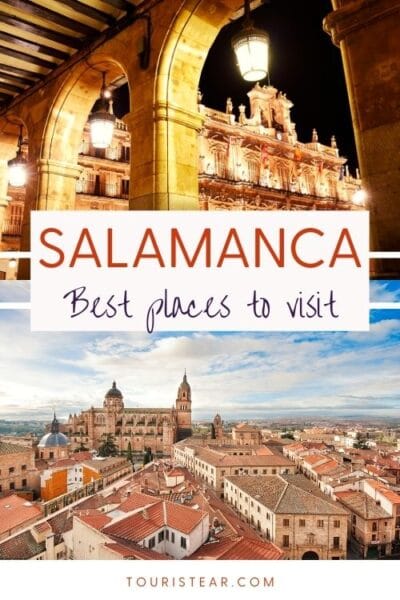
Last Updated on 17 April, 2024 by Veronica
Disclosure: Some of the links on this post are affiliate links, meaning at no additional cost to you, I may earn a small commission if you click through and make a purchase.
Author: Veronica
Vero, a seasoned traveler, has explored 25 countries and lived in five, gaining a rich perspective and fostering an infectious passion for travel. With a heart full of wanderlust, Vero uncovers the world’s hidden gems and shares insights, tips, and planning advice to inspire and assist fellow adventurers. Join Vero and let the shared passion for travel create unforgettable memories.
